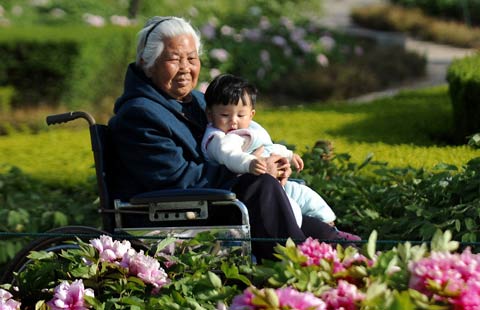The meaning of China's Asia-Pacific Dream
Updated: 2014-11-21 12:27
By Simon Tay and Gina Guo(China Daily Europe)
|
|||||||||||
Regional free trade agreements and other measures proposed could lead to greater common prosperity
The key global economies met in Brisbane on Nov 15 and 16 for the G20, following recent summits of the Association of Southeast Asian Nations, and for East Asia and the wider Asia-Pacific. These are not just about politics but growth, trade and investment.
In the region, several agreements are being negotiated with varying and overlapping memberships. Most notable is the Trans-Pacific Partnership, which is led by the United States and includes Japan. China has recently said it is closely watching TPP talks.
The newest proposal from China's President Xi Jinping may eclipse them. While hosting the Asia-Pacific Economic Cooperation meeting, he ambitiously raised an even bigger and more inclusive Free Trade Area of the Asia-Pacific and set this in the context of China's "Asia-Pacific Dream".
Yet, the idea of the FTAAP is not new. APEC ministers initiated it back in 2006, with leaders' endorsements coming in 2010. As such, no one has said "No" to Xi.
But, the reception has been cool. A feasibility study on FTAAP was proposed in May, when the trade ministers met in Qingdao in China. Nonetheless, the United States and Japan have watered this down to a "collective strategic study" to indicate they have yet to decide whether to enter into actual negotiations.
The hesitance relates to the problems faced in the TPP, meant to be the international economic centerpiece of the Obama administration. Negotiations are now in their fourth year - long overdue and in danger of foundering.
This is not only because of sticking points with Japan over automobiles and some agricultural products. Domestic American politics is another factor. Following the midterm election results, Republicans control the two houses of Congress and may not sign off on any deal brought by the Obama administration.
Both the US and Japan must push through. Otherwise, their credibility to offer leadership in the region will suffer. But, this does not mean they should give a cold shoulder to China's proposal for the FTAAP.
Trade agreements need not be oppositional. The logic emphasizes interdependence and win-win outcomes. The FTAAP offers a long-term perspective to deepen regional economic integration. It is also a possible roadmap to converge the TPP and the ongoing patchwork of other trade and economic agreements.
The idea is worth exploring, whether put forward by China or any other country. But, coming from Xi, the proposal underlines a growing truth: China is emerging as the region's central economy and cannot be easily excluded.
Since becoming a World Trade Organization member in 2001, China has been actively pursuing economic cooperation and free trade agreements across the region. Agreements with ASEAN, Singapore, New Zealand, Peru and Australia have been signed, with Australia being the most recent one. The landmark deal with Australia will see service industries like tourism, finance and education being liberalized.
With South Korea, Beijing has just completed FTA negotiations that, once in force, will eliminate tariffs on the vast majority of traded goods. With ASEAN, while differences continue over the South China Sea, expect an upgrade of the ASEAN-China FTA.
But, to achieve the FTAAP, several bridges need to be crossed, and indeed to be built.
First, there is the Regional Comprehensive Economic Partnership that seeks to build on existing FTAs that ASEAN has, separately, with Australia-New Zealand, China, India, Japan and South Korea. If this all-Asian agreement can be forged, this will be a step forward.
Second, an FTA among China, Japan and South Korea is due. Talks are into their fifth round, but prospects have been mixed. On the one hand, a boost has come from the conclusion of the China-South Korea deal. Tense Sino-Japanese ties over political and security issues, however, remain a problem.
This was evidenced in the very brief and uneasy meeting between the two state leaders at the sidelines of the APEC. However, the fact that both leaders did at last meet is some signal that they recognize the rationale to move on. Only if Sino-Japanese ties are normalized can the RCEP and China-Japan-South Korea agreement move ahead.
Third, and the most important for the FTAAP to have a chance, is the need for better ties between the US and China. Relations between the two sides in the past year seemed to be in something of a free fall. But, the Xi-Obama meeting at APEC has shown that, despite ongoing differences, something positive can be achieved.
Their agreement on climate change has been heralded by both sides and could be a foundation to develop common understanding and collaboration. The elimination of duties on $1 trillion in technology products has signaled that the two largest economies are poised for an investment treaty. Given the deep interdependencies between the two, further cooperation would make sense.
Moving ahead with these initiatives will take not only time, but also political will and courage. Political mindsets about great power relations must shift. In the meantime, expect China to play a greater role with other neighbors.
This is the uniting logic in Xi's ambitions for maritime and land-based Silk Roads to connect the region as well as to create the Asian Infrastructure Investment Bank to accelerate infrastructure development. All this can and will be done, whether or not there is an FTAAP.
The G20 has targeted global growth and Asia is searching for engines to keep up its momentum. China is pursuing agreements with those nearby who are willing. Few welcome Beijing as the Central Kingdom but many must recognize that China is increasingly the central economy.
Simon Tay is chairman and Gina Guo is policy research senior executive at the Singapore Institute of International Affairs. The institute is co-organizing the Asia Pacific Forum 2014, with the Japan Economic Foundation, set for Nov 24 to engage international participants on a dialogue on trade and economic development in the region. The views do not necessarily reflect those of China Daily.
(China Daily European Weekly 11/21/2014 page11)
Today's Top News
China wants its voice heard in cyberspace
New standards set for air purifiers
Alipay brings the frenzy of Black Friday to China
US violates China sovereignty in HK
Cyber terrorism sparks Internet debate
Editorial: Mob politics rocks HK
UnionPay offers discounts to outbound tourists
Palace Museum opens door to special groups for free
Hot Topics
Lunar probe , China growth forecasts, Emission rules get tougher, China seen through 'colored lens', International board,
Editor's Picks

|

|

|

|

|

|





